Klamath River Fish Kills
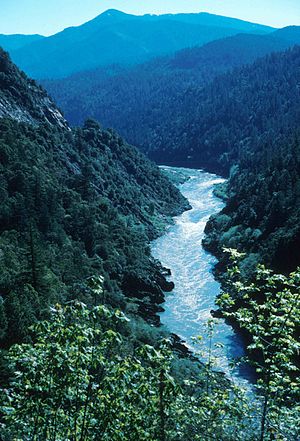
The Yurok Tribe of Northen California
Madeline Braxton
The River Killer
Dams have devastating direct impacts on their surrounding environments while producing extremely minimal power. These massive constructions cut off migrations for fish and trap vital sediments necessary for natural geological processes. The natural processes also aid in the process of creating fertile marine habitats and barrier reef formations. The most direct impact dams have on rivers is the significant change in river temperatures, oxygen levels and chemical makeup due to the specific flow dams release. A rivers plant and animal life depend on certain sustained conditions. When these conditions are altered, it can cause fatal outcomes for the life within a river’s ecosystem. These consequences can quickly trickle through the entire ecosystem of the river causing irreversible damage (Williams and Wolman 1984). With 8 dams constructed along the Klamath River of Northern California, the ecosystem and the people who depend on it will never be the same again.
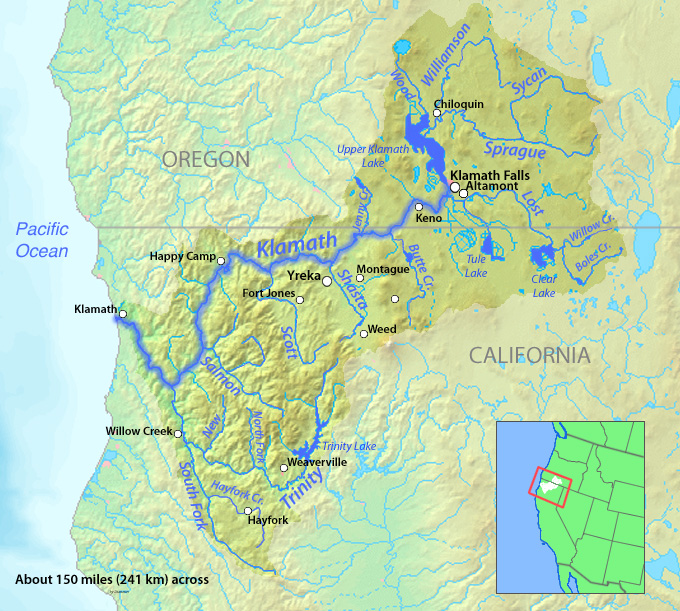
History of The Klamath River
The Klamath river is the second largest river in California, running over 257 miles across Oregon and Northern California and emptying into the Pacific Ocean. This river has supplemented the lifestyles of Indigenous peoples for 7,000 years and has become a sacred aspect to the The Yurok, Klamath, Hoopa, Karuk and Shasta tribes along the Klamath for generations. (Click on a tribes name for a link to their webpages and to learn more information). However, in recent decades a series of government funded hydropower dams have been constructed along the Klamath river (American 2017). The pollution, irrigation and new dam construction along the Klamath River has caused a devastation to the river’s marine life for decades. Previously, supporting one third of the salmon run on the west coast, the river now runs only a fraction of the life it used to. After a major fish kill in 2002, push for broader water management along the Klamath has been the focus of the tribes living along its waters. The result came to be the Klamath Basin Restoration Agreement which is set to remove 4 dams along the Klamath starting in 2020 (American 2017). This site takes an in depth look into the exact causes and consequences of the fish kills along the Klamath River as well as looking at how the long-standing Yurok tribe has federally combated the issue today. Below is a condensed timeline of construction and policies inacted along the Klamath River (W 2019).
Chronology of Dam construction along the Klamath
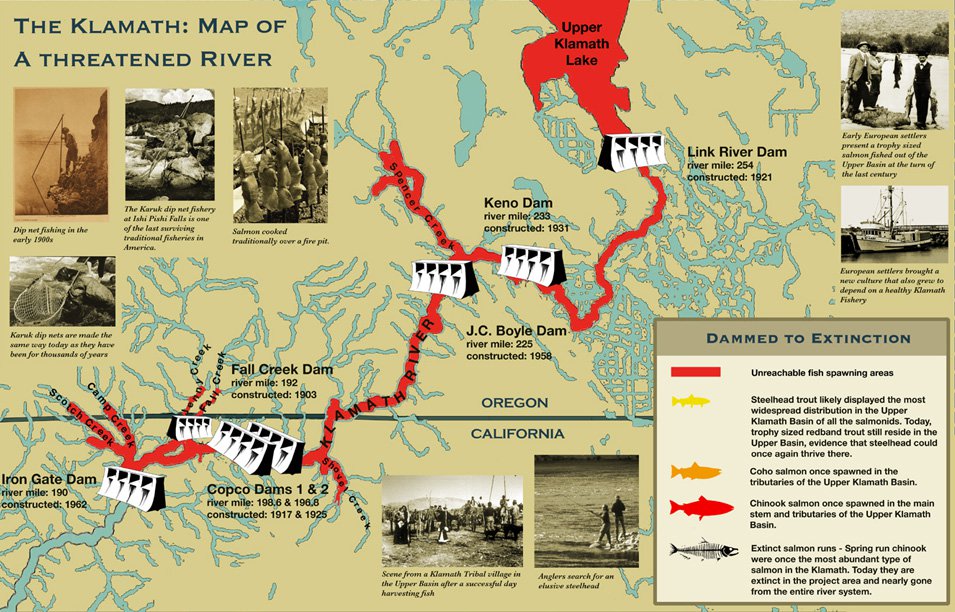
- 1918: Copco 1The first dam on the Klamath river becomes operational. salmon runs end in the Upper Klamath Basin.
- 1921: Link River Dam completed. control of water releases from Upper Klamath Lake is obtained.
- 1925: Copco 2 Dam completed and operating.
- 1928: Dingell Dam constructed on the Shasta River. Spawning habitat to the largest Klamath Basin salmon run is no longer accessible.
- 1933: Tribal gill-net fishing is banned to control low salmon runs along the Klamath.
- 1958: Big Bend Dam completed.
- 1962: Iron Gate Dam completed.
- 1963: Lewiston Dam on the Trinity River completed.
- 1965: Keno Dam completed.
- 1976: Oregon Water Resources Department begins Klamath Basin water rights adjudication process in response to changing river enviornment along th Klamath.
- 1986: Klamath River Basin Fishery Resources Restoration Act passes in Congress creating a 20 year plan to restore ish population along the Klamath River.
- 1986: sucker fishery on Upper Klamath Lake is closed by Klamath tribes due to low fish populations.
- 1988: Lost River and short nose suckers listed as endangered under the federal Endangered Species Act.
- 1992: Severe decline in Klamath River salmon runs reported.
- 1993: Klamath River tribal salmon fishing limit is set to half the total available harvest by federal law in response to low fish population.
- 2000: PacifiCorp begins federal relicensing process for the construction of the Klamath Hydroelectric Project dams to continue.
- 2002: 34,952 salmon die in the lower Klamath River in September.
- 2013: Irrigation to agricultural growers in the upper basin is cut off in repsonse to impacts of 2002 fish kill still affecting salmon population.
- 2016: Department of the Interior, U.S. Department of Commerce, PacifiCorp, and Oregon and California government sign The Klamath Basin Restoration Agreement to remove four dams along the Klamath River starting in 2020 in response to analysis showing dams affect on fish population along the Klamath River.
- 2020: Earliest year in which dam removal would begin under the Klamath Hydroelectric Settlement Agreement.
As the timeline shows, even with restoration processes and lowered fishing activities, the devastation of the Klamath fish kills still took place. This evidence from the timeline shows how the operation of the dams constructed quickly impacted the Klamath river ecosystem over one century. Currently, new progress has been made in restoring the damage done.
The Klamath River Fish Kills
Yurok Tribe Takes Action
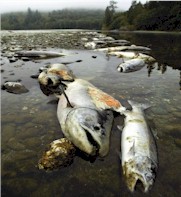
On September 19, 2002 a report of dead fish on the Klamath river lead to full scale investigation by Yurok Tribal Fisheries Program, Hoopa Valley Tribe, U.S. Fish and Wildlife Services and California department of fish and game. It was reported that 34,925 fish were killed in total, 87% being Chinook Salmon (Belchik 2004). The fish kills were concentrated to the lower 30 miles of the Klamath River. This area is mainly confined within the Yurok Indian reservation, making the Yurok Tribe the most affected by the epidemic. No such fish kills on this scale have ever been reported in U.S. history.(Belchik 2004).
According to a report done by the Yurok tribal fisheries program in 2004, The causative factor of the fish kills in 2002 was due to a low water flow in the river leading to the festering of deadly parasites (Belchik 2004). Two fish parasites, ich and columnaris, were found to be the leading cause of the fish kills. Both Ich and columnaris are fatal diseases for fish that rapidly repopulate once one fish has been infected. Both parasites thrive in low water flow. The temperature of the river and the salmon population reported before the fish kills in the river was exceptionally high with an extremely low flow reported at the same time (Belchik).
While it is known how the fish died, the question raises as to what caused such low flows that lead to this epidemic?
The Culprit
It is known that dams disrupt river flows, degrade water quality, block the movement of a river’s vital nutrients and sediment and can destroy the natural habitat of fish and wildlife (Williams and Wolman 1984).
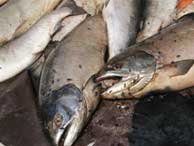
From the Yurok analysis, it was shown that the Iron Gate Dam was the main culprit for the fish kills of 2002. The low flows from Iron Gate occured after Secretary of the Interior, Gale Norton, gave the okay to divert the dams water ways for irrigation for framers in an ongoing drought. The Iron Gate dam controls 89% of the flow where the fish kills occurred in the lower Klamath River (Belchik 2004). The flow being relased from Iron Gate Dam was also the only factor controllable by humans and the low flow the dam produced created the perfect environment for deadly parasites to fester.
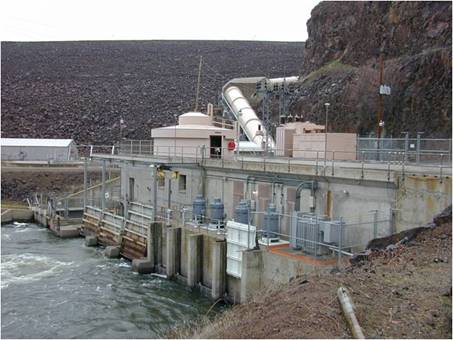
“Had the flow from Iron Gate Dam in August and September been at or above approximately 1000 cfs, as they were in all other years of above average escapements, it is likely that the fish kill would not have occurred” (Belchik 2004)
The flow from Iron Gate Dam had been at its lowest in 2002 with only 757 cfs (cfs=cubic feet per second, the offical measurement for water flow). The low flow rate from the Iron gate dam not only caused higher temperatures and poor water quality to fast track infectious fish diseases but it also gave the fish a lack of migration cues. These factors led to a heavy concentration of fish in the lower Klamath river with an above average fish total of 160,000 in the lower Klamath (Belchik 2004). In this case, there were more fish running into a lower flowing river, creating the perfect conditions for Ich and Columnaris. It was reported that if the cfs had been at 1300 or above, as it should have been, it would have relieved fish crowding by 25% ameliorating any potential infections. Iron Gate Dam was reported to immediately raise its cfs flow from 757 to 1300 directly after the fish kill epidemic. (Belchik 2004)
Thefull report. was completed by the Yurok Tribal Fisheries Program in 2004.
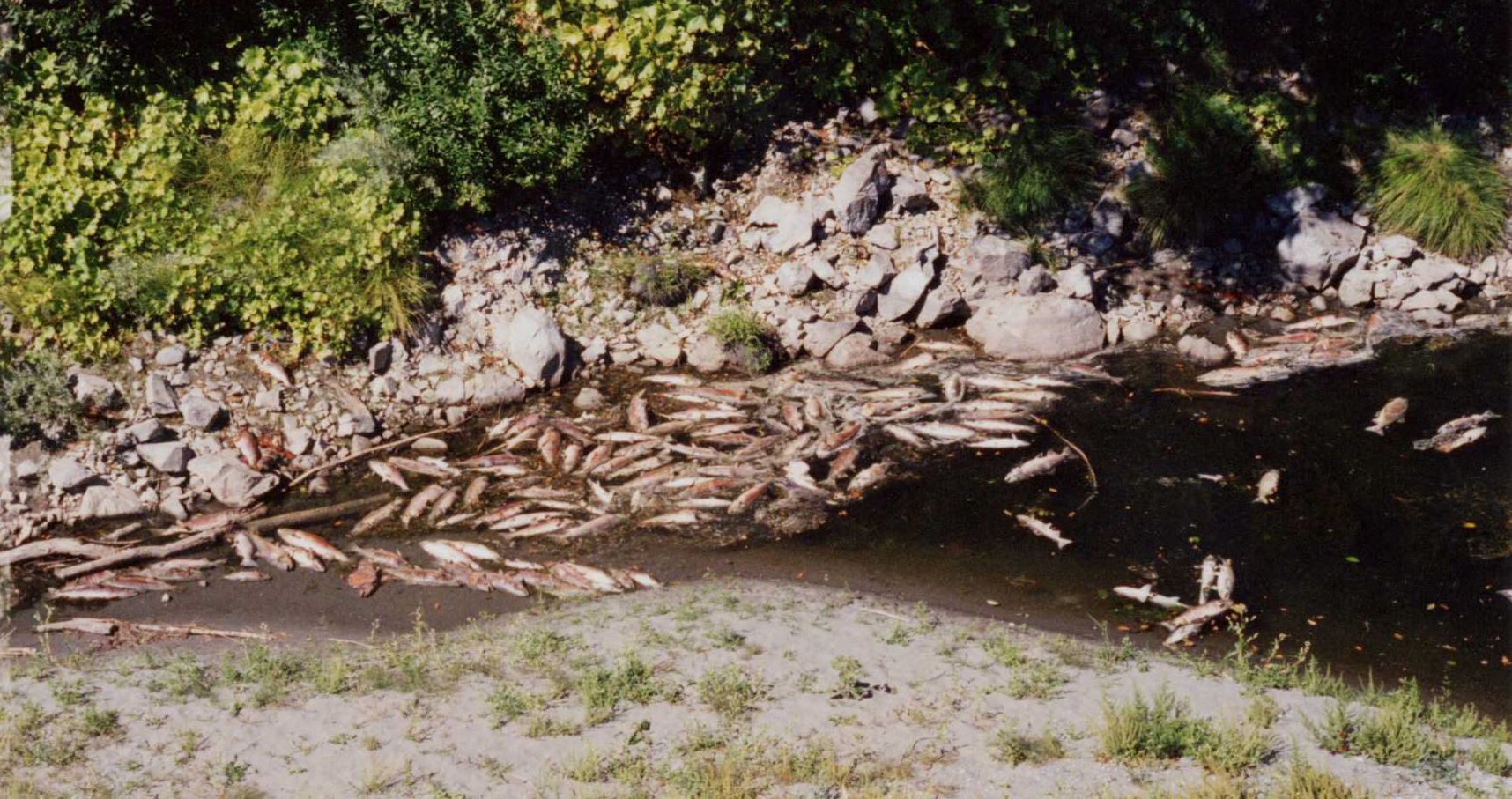
The Downriver People
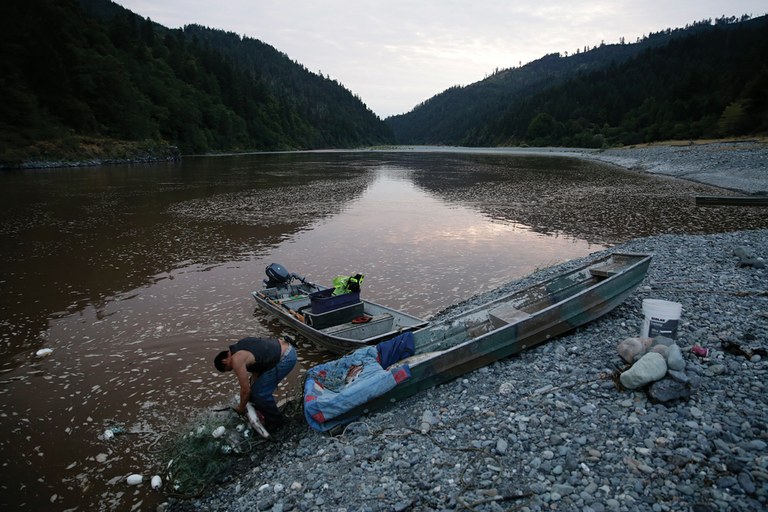
Fighting for Tomorrow
While the Klamath Fish Kills of 2002 still dominate most of the arguments today, severe droughts and environmental affects of the Hydro Project dams are still substantially affecting the area. Current salmon populations continue to decrease with fish populations at 46% of the normal rate. With less fish for the tribes due to low flow and less water for farmers due to the drought, Scott white executive director of the Klamath Water User’s Association calls the current satiation “an operational nightmare” (Smith 2018)
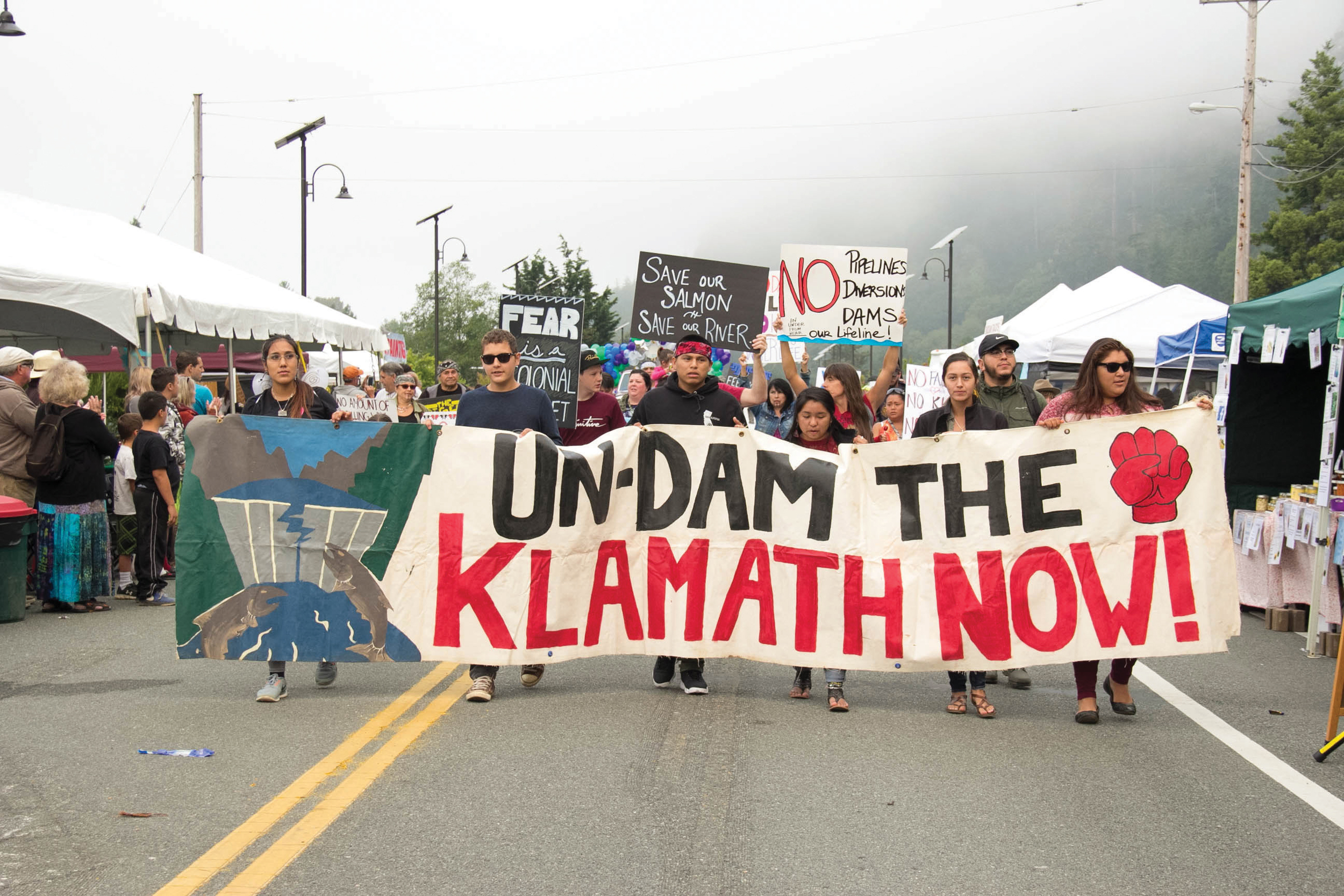
The fish kills and environmental effects of the dams have occurred mainly within the confines of the Yurok tribe reservation. After being impacted the hardest from the epidemic, the Yurok tribe has been the forefront in battling the issue (Smith 2020). The Yurok Tribe has been organizing protest after protest for the removal of the ever destructive Hydro Power dams along the Klamath as well as more effective water managment for future sustainability of the river (Chaffin et al. 2016).

After witnessing the 2002 fish kills first hand and being a victim of the current damage to the Klamath ecosystem, graduate student and Yurok tribal member Amy Cordalis, became Yuroks first ever tribal general counsel. Amy Coralis’ efforts put Yurok into intense legal battles with the U.S. Supreme Court over the Klamath River and water management for the area (Smith 2018). With Cordilas' help recently a district court ruled salmon on Klamath as a priority under law diverting the natural water flow back into the river (Smith 2018). After low salmon numbers and commercial fishing was closed in 2006, PacifiCorp, the hydropower operator, was looking toward many environmental law suits after it was evident that the damage done, was due to the dams. Working with the Yurok Tribe and the U.S. and state governments the Klamath River Renewal Corporation was created. This group aggreged upon the Klamath Basin restoration act which is set to remove four of the eight major dams along the Klamath starting with the first removal in 2020 (Smith 2018). This will be the largest dam removal in United States history. With two major wins for the Yurok tribe, Cordilas is still pushing for better water management and use of the river today to implement better sustainability for future generations. (Smith 2018).

The Fight for Water
The original reason for lowering the river flow of the Klamath was in part due to the drought of the area affecting local farmers. The farmers pushed the government for more irrigation from the river, diverting its water ways from the ecosystem. While the effects of this problem are being resolved, farmers along the Klamath are hurting more than ever with less water being diverted their way once the Dams are decommissioned in 2020 and an ever-growing drought to the area. (Kershaw 2016)
While the Klamath basin restoration act is a huge win for the Yurok Tribe, it is in turn jeopardizing the lives of others in the area by diverting water ways back into the river. In response to this issue the federal and state governments of California and Oregon have signed a new agreement called the Klamath Power and Facilities Agreement. This will help farmers and ranchers in the area financially once the source of their irrigation will be cut off once the dams are deconditioned (Kershaw 2016).
While this may seem like a win for both sides, the farmers are losing their lifeways while the damage done to the Klamath is still present. Fish number have been steadily decling and from recent reviews, it seems as though there may not be enough salmon even after the decommisionsing of the dams to support the tribe (Kershaw 2016). The question arises, is there a way for both sides to sustain their lifeways and keep the Klamath a natural flowing ecosystem?
Refrences
American Rivers (2017). Klamath River.
Belchik, M., Hillemeier, D., & Pierce, R. (2004). The Klamath River Fish Kill of 2002; Analysis of Contributing Factor. Yurok Tribal Fisheries.
Chaffin, B., Garmestani, A., Gosnell, H., & Craig, R. (2016). Institutional networks and adaptive water governance in the Klamath River Basin, USA. Environmental Science & Policy, 57, 112-121. doi:10.1016/j.envsci.2015.11.008
W. (2019). Klamath River Basin Chronology
Williams, G., & Wolman, M. (1984). Downstream effects of dams on alluvial rivers. Geological Survery Professional Paper.
T. (2019). The Yurok Tribe Welcomes You.